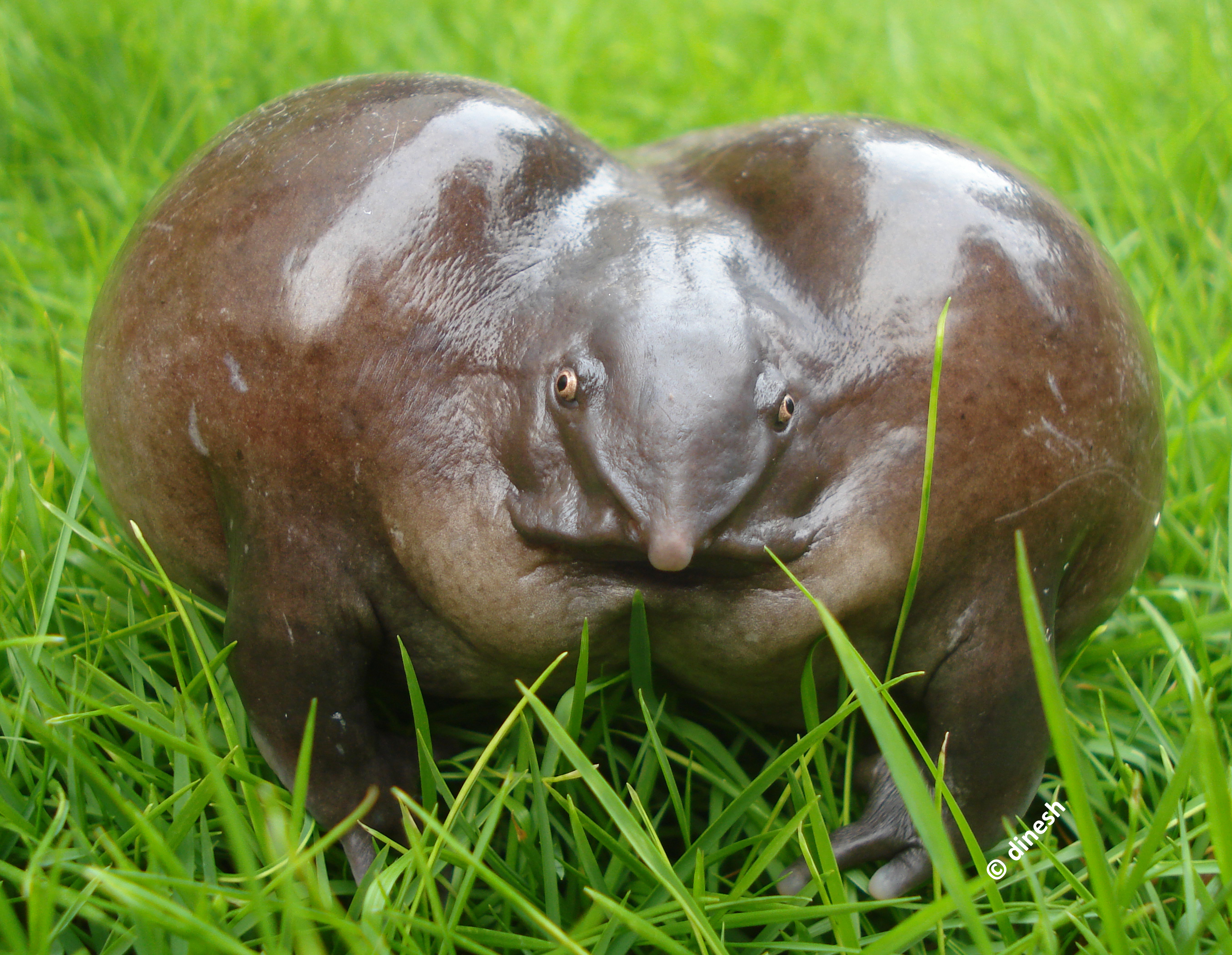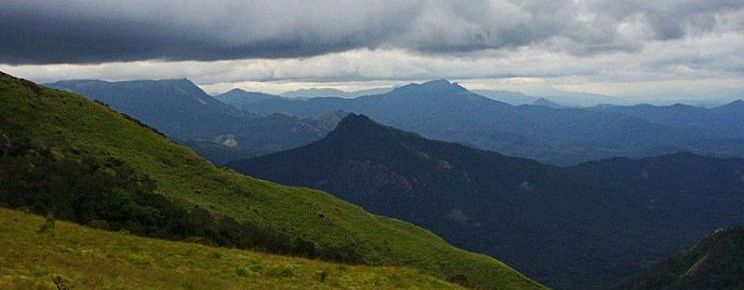Adaptations
Natural burrowers, Nasikabatrachus sahyadrensis has adapted numerous characteristics that allow it to thrive underground. N. sahyadrensis morphology indicates definitive body structures that aid in burrowing and feeding underground. Their specialized morphology allows them to completely burrow themselves under the soil within 3 to 5 minutes (Radhakrishnan et al. 2007).
Legs
When moving across a surface N. sahyadrensis does not jump using modified hind legs like other anurans, but crawls across surfaces aided by short, less powerful hind legs. N. sahyadrensis have hind limbs with strong, outwardly directed, tubercled (having small, rounded bumps at the ends) feet that aid in burrowing. When burrowing the hind limbs are tucked under the body as they push soil out and up from underneath the body. Hard forelimbs are also used to push down through the soil (Radhakrishnan et al. 2007).
Back

Fascinatingly, N. sahyadrensis contract their back muscles when burrowing to become two bulging blocks that make the organism a compact, solid body mass for more effective burrowing. The contracted back muscles work with the pelvic girdle muscle structures and hind limbs for better burrowing. (Radhakrishnan et al. 2007). This allows N. sahyadrensis to penetrate through the soil without being crushed by the heavy weight of the moist soil as it burrows down deeper and deeper and moves around foraging on organisms deep in the soil once it is burrowed.
Nose/Mouth/Eyes
N. sahyadrensis is currently considered the only completely underground forager while other burrowing frogs, although they live underground, usually feed on the surface of land. To learn more about another anuran with a very similar burrowing life style click HERE and check out the Mexican Burrowing Toad. A touch sensitive, pointed snout allows N. sahyadrensis to depend mainly on touch and smell rather than sight for hunting prey in a dark, underground habitat. Therefore, N. sahyadrensis has small underdeveloped eyes and poor vision as it is not necessary in its predominantly underground habitat. The narrow, gaped mouth allows N. sahyadrensis to penetrate through the soil and use its fluted tongue to scoop up small soil dwelling insects as prey, or more specifically to protrude into termite tunnels and suck them up (Radhakrishnan et al. 2007).
Continue to Nutrition
